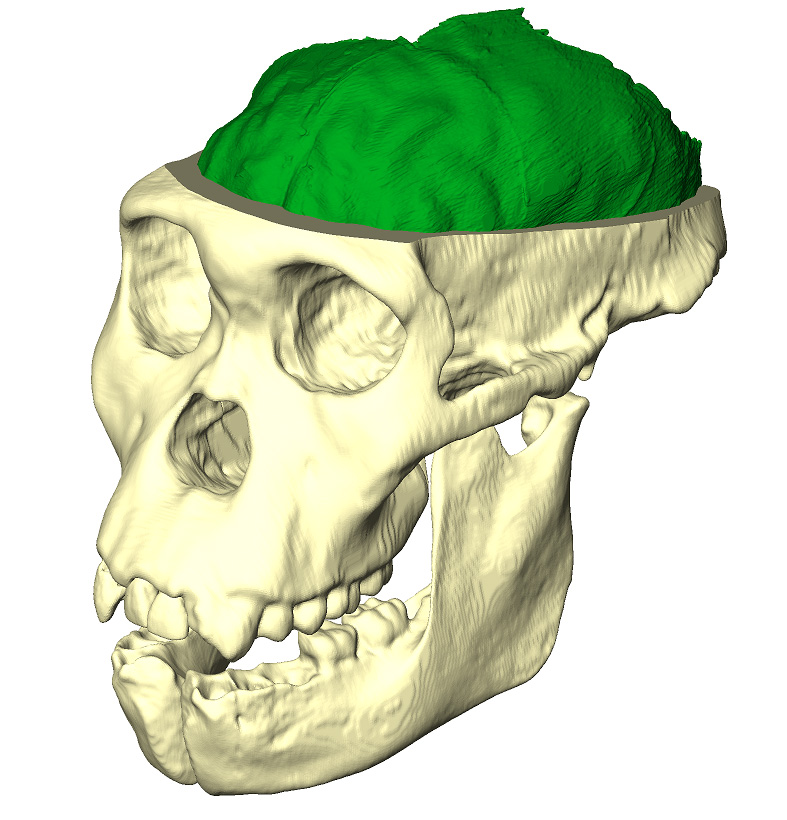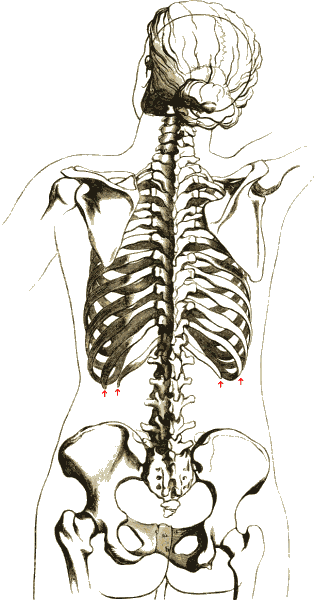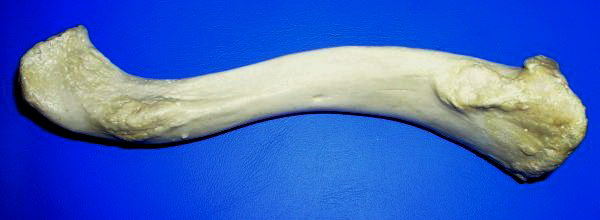|
Australopithecus Sediba
''Australopithecus sediba'' is an extinct species of australopithecine recovered from Malapa Fossil Site, Cradle of Humankind, Malapa Cave, Cradle of Humankind, South Africa. It is known from a partial juvenile skeleton, the holotype MH1, and a partial adult female skeleton, the paratype MH2. They date to about 1.98 million years ago in the Early Pleistocene, and coexisted with ''Paranthropus robustus'' and ''Homo ergaster'' / ''Homo erectus''. Malapa Cave may have been a natural death trap, the base of a long vertical shaft which creatures could accidentally fall into. ''A. sediba'' was initially described as being a potential human ancestor, and perhaps the progenitor of ''Homo'', but this is contested and it could also represent a late-surviving population or sister taxa, sister species of ''Australopithecus africanus, A. africanus'' which had earlier inhabited the area. MH1 has a brain volume of about 350–440 cc, similar to other australopithecines. The face of MH1 is strik ... [...More Info...] [...Related Items...] OR: [Wikipedia] [Google] [Baidu] |
Early Pleistocene
The Early Pleistocene is an unofficial epoch (geology), sub-epoch in the international geologic timescale in chronostratigraphy, representing the earliest division of the Pleistocene Epoch within the ongoing Quaternary Period. It is currently estimated to span the time between 2.580 ± 0.005 annum, Ma (million years ago) and 0.773 ± 0.005 Ma. The term Early Pleistocene applies to both the Gelasian, Gelasian Age and the Calabrian (stage), Calabrian Age. While the Gelasian and the Calabrian have officially been defined by the International Union of Geological Sciences (IUGS) to effectively constitute the Early Pleistocene, the succeeding Chibanian and Tarantian ages have yet to be ratified. These proposed ages are unofficially termed the Middle Pleistocene and Late Pleistocene respectively. The Chibanian provisionally spans time from 773 ka to 126 ka, and the Tarantian from then until the definitive end of the whole Pleistocene, c. 9700 BC in the 10th millennium BC. Notes {{Ge ... [...More Info...] [...Related Items...] OR: [Wikipedia] [Google] [Baidu] |
Prognathism
Prognathism is a positional relationship of the mandible or maxilla to the skeletal base where either of the jaws protrudes beyond a predetermined imaginary line in the coronal plane of the skull. In the case of ''mandibular'' prognathism (never maxillary prognathism), this is often also referred to as Habsburg chin, Habsburg's chin, Habsburg jaw or Habsburg's jaw especially when referenced with the context of its prevalence amongst historical members of the House of Habsburg. Mandibular prognathism is typically pathological, whereas maxillary prognathism is often the result of normal human population variation. In general dentistry, oral and maxillofacial surgery, and orthodontics, this is assessed clinically or radiographically ( cephalometrics). The word ''prognathism'' derives from the Greek πρό (''pro'', meaning 'forward') and γνάθος (''gnáthos'', 'jaw'). One or more types of prognathism can result in the common condition of malocclusion, in which an individua ... [...More Info...] [...Related Items...] OR: [Wikipedia] [Google] [Baidu] |
Vertebral Column
The spinal column, also known as the vertebral column, spine or backbone, is the core part of the axial skeleton in vertebrates. The vertebral column is the defining and eponymous characteristic of the vertebrate. The spinal column is a segmented column of vertebrae that surrounds and protects the spinal cord. The vertebrae are separated by intervertebral discs in a series of cartilaginous joints. The dorsal portion of the spinal column houses the spinal canal, an elongated body cavity, cavity formed by the alignment of the vertebral neural arches that encloses and protects the spinal cord, with spinal nerves exiting via the intervertebral foramina to innervate each body segment. There are around 50,000 species of animals that have a vertebral column. The human spine is one of the most-studied examples, as the general structure of human vertebrae is fairly homology (biology), typical of that found in other mammals, reptiles, and birds. The shape of the vertebral body does, howev ... [...More Info...] [...Related Items...] OR: [Wikipedia] [Google] [Baidu] |
Ribcage
The rib cage or thoracic cage is an endoskeletal enclosure in the thorax of most vertebrates that comprises the ribs, vertebral column and sternum, which protect the vital organs of the thoracic cavity, such as the heart, lungs and great vessels and support the shoulder girdle to form the core part of the axial skeleton. A typical human thoracic cage consists of 12 pairs of ribs and the adjoining costal cartilages, the sternum (along with the manubrium and xiphoid process), and the 12 thoracic vertebrae articulating with the ribs. The thoracic cage also provides attachments for extrinsic skeletal muscles of the neck, upper limbs, upper abdomen and back, and together with the overlying skin and associated fascia and muscles, makes up the thoracic wall. In tetrapods, the rib cage intrinsically holds the muscles of respiration ( diaphragm, intercostal muscles, etc.) that are crucial for active inhalation and forced exhalation, and therefore has a major ventilatory function in th ... [...More Info...] [...Related Items...] OR: [Wikipedia] [Google] [Baidu] |
Clavicle
The clavicle, collarbone, or keybone is a slender, S-shaped long bone approximately long that serves as a strut between the scapula, shoulder blade and the sternum (breastbone). There are two clavicles, one on each side of the body. The clavicle is the only long bone in the body that lies horizontally. Together with the shoulder blade, it makes up the shoulder girdle. It is a palpable bone and, in people who have less fat in this region, the location of the bone is clearly visible. It receives its name from Latin ''clavicula'' 'little key' because the bone rotates along its axis like a key when the shoulder is Abduction (kinesiology), abducted. The clavicle is the most commonly fractured bone. It can easily be fractured by impacts to the shoulder from the force of falling on outstretched arms or by a direct hit. Structure The collarbone is a thin doubly curved long bone that connects the human arm, arm to the torso, trunk of the body. Located directly above the first rib, it ac ... [...More Info...] [...Related Items...] OR: [Wikipedia] [Google] [Baidu] |
Matthew Berger
Lee Rogers Berger (born December 22, 1965) is an American-born South African paleoanthropologist and National Geographic Explorer-in-Residence. He is best known for his discovery of the ''Australopithecus sediba'' type site, Malapa; his leadership of Rising Star Expedition in the excavation of ''Homo naledi'' at Rising Star Cave; and the Taung Bird of Prey Hypothesis. Berger is known not only for his discoveries, but also for his unusually public persona in paleoanthropology, and for making his most notable discoveries open-access projects. He gives hundreds of talks per year, and has had a close relationship with National Geographic for many years, appearing in several of their shows and documentaries. Early life and education Berger was born in Shawnee Mission, Kansas in 1965, but was raised outside of Sylvania, Georgia in the United States. As a youth, Berger was active in the Boy Scouts, Future Farmers of America, and president of Georgia 4-H. In 1984, Berger was named ... [...More Info...] [...Related Items...] OR: [Wikipedia] [Google] [Baidu] |
Generalist And Specialist Species
A generalist species is able to thrive in a wide variety of environmental conditions and can make use of a variety of different resources (for example, a heterotroph with a varied diet). A specialist species can thrive only in a narrow range of environmental conditions or has a limited diet. Most organisms do not all fit neatly into either group, however. Some species are highly specialized (the most extreme case being monophagous, eating one specific type of food), others less so, and some can tolerate many different environments. In other words, there is a continuum from highly specialized to broadly generalist species. Description Omnivores are usually generalists. Herbivores are often specialists, but those that eat a variety of plants may be considered generalists. A well-known example of a specialist animal is the monophagous koala, which subsists almost entirely on eucalyptus leaves. The raccoon is a generalist, because it has a natural range that includes most of Nor ... [...More Info...] [...Related Items...] OR: [Wikipedia] [Google] [Baidu] |
Chimpanzee
The chimpanzee (; ''Pan troglodytes''), also simply known as the chimp, is a species of Hominidae, great ape native to the forests and savannahs of tropical Africa. It has four confirmed subspecies and a fifth proposed one. When its close relative the bonobo was more commonly known as the pygmy chimpanzee, this species was often called the common chimpanzee or the robust chimpanzee. The chimpanzee and the bonobo are the only species in the genus Pan (genus), ''Pan''. Evidence from fossils and DNA sequencing shows that ''Pan'' is a sister taxon to the Human evolution, human lineage and is thus humans' closest living relative. The chimpanzee is covered in coarse black hair but has a bare face, fingers, toes, palms of the hands, and soles of the feet. It is larger and more robust than the bonobo, weighing for males and for females and standing . The chimpanzee lives in groups that range in size from 15 to 150 members, although individuals travel and forage in much smaller grou ... [...More Info...] [...Related Items...] OR: [Wikipedia] [Google] [Baidu] |
C4 Carbon Fixation
carbon fixation or the Hatch–Slack pathway is one of three known photosynthetic processes of carbon fixation in plants. It owes the names to the 1960s discovery by Marshall Davidson Hatch and Charles Roger Slack. fixation is an addition to the ancestral and more common carbon fixation. The main carboxylating enzyme in photosynthesis is called RuBisCO, which catalyses two distinct reactions using either (carboxylation) or oxygen (oxygenation) as a substrate. RuBisCO oxygenation gives rise to phosphoglycolate, which is toxic and requires the expenditure of energy to recycle through photorespiration. photosynthesis reduces photorespiration by concentrating around RuBisCO. To enable RuBisCO to work in a cellular environment where there is a lot of carbon dioxide and very little oxygen, leaves generally contain two partially isolated compartments called mesophyll cells and bundle-sheath cells. is initially fixed in the mesophyll cells in a reaction catalysed by th ... [...More Info...] [...Related Items...] OR: [Wikipedia] [Google] [Baidu] |
Hominin
The Hominini (hominins) form a taxonomic tribe of the subfamily Homininae (hominines). They comprise two extant genera: ''Homo'' (humans) and '' Pan'' (chimpanzees and bonobos), and in standard usage exclude the genus '' Gorilla'' ( gorillas), which is grouped separately within the subfamily Homininae. The term Hominini was originally introduced by Camille Arambourg (1948), who combined the categories of ''Hominina'' and ''Simiina'' pursuant to Gray's classifications (1825). Traditionally, chimpanzees, gorillas and orangutans were grouped together, excluding humans, as pongids. Since Gray's classifications, evidence accumulating from genetic phylogeny confirmed that humans, chimpanzees, and gorillas are more closely related to each other than to the orangutan. The orangutans were reassigned to the family Hominidae ( great apes), which already included humans; and the gorillas were grouped as a separate tribe (Gorillini) of the subfamily Homininae. Still, details of th ... [...More Info...] [...Related Items...] OR: [Wikipedia] [Google] [Baidu] |
Sedge
The Cyperaceae () are a family of graminoid (grass-like), monocotyledonous flowering plants known as wikt:sedge, sedges. The family (biology), family is large; botanists have species description, described some 5,500 known species in about 90 genus, generathe largest being the "true wikt:sedge, sedges" (genus ''Carex''), with over 2,000 species. Distribution Cyperaceae species are widely distributed with the centers of diversity for the group occurring in tropical Asia and tropical South America. While sedges grow in almost all environments, many thrive in wetlands or in poor soils. Community (ecology), Ecological communities dominated by sedges are known as s or as sedge meadows. Classification Some species superficially resemble the closely related Juncaceae , rushes and the more distantly related grasses. Features distinguishing members of the sedge family from grasses or rushes are stems with triangular cross-sections (with occasional exceptions, a notable example be ... [...More Info...] [...Related Items...] OR: [Wikipedia] [Google] [Baidu] |
C3 Carbon Fixation
carbon fixation is the most common of three metabolic pathways for carbon fixation in photosynthesis, the other two being and CAM. This process converts carbon dioxide and ribulose bisphosphate (RuBP, a 5-carbon sugar) into two molecules of 3-phosphoglycerate through the following reaction: :CO2 + H2O + RuBP → (2) 3-phosphoglycerate This reaction was first discovered by Melvin Calvin, Andrew Benson and James Bassham in 1950. C3 carbon fixation occurs in all plants as the first step of the Calvin–Benson cycle. (In and CAM plants, carbon dioxide is drawn out of malate and into this reaction rather than directly from the air.) Plants that survive solely on fixation ( plants) tend to thrive in areas where sunlight intensity is moderate, temperatures are moderate, carbon dioxide concentrations are around 200 ppm or higher, and groundwater is plentiful. The plants, originating during Mesozoic and Paleozoic eras, predate the plants and still represent approximatel ... [...More Info...] [...Related Items...] OR: [Wikipedia] [Google] [Baidu] |





